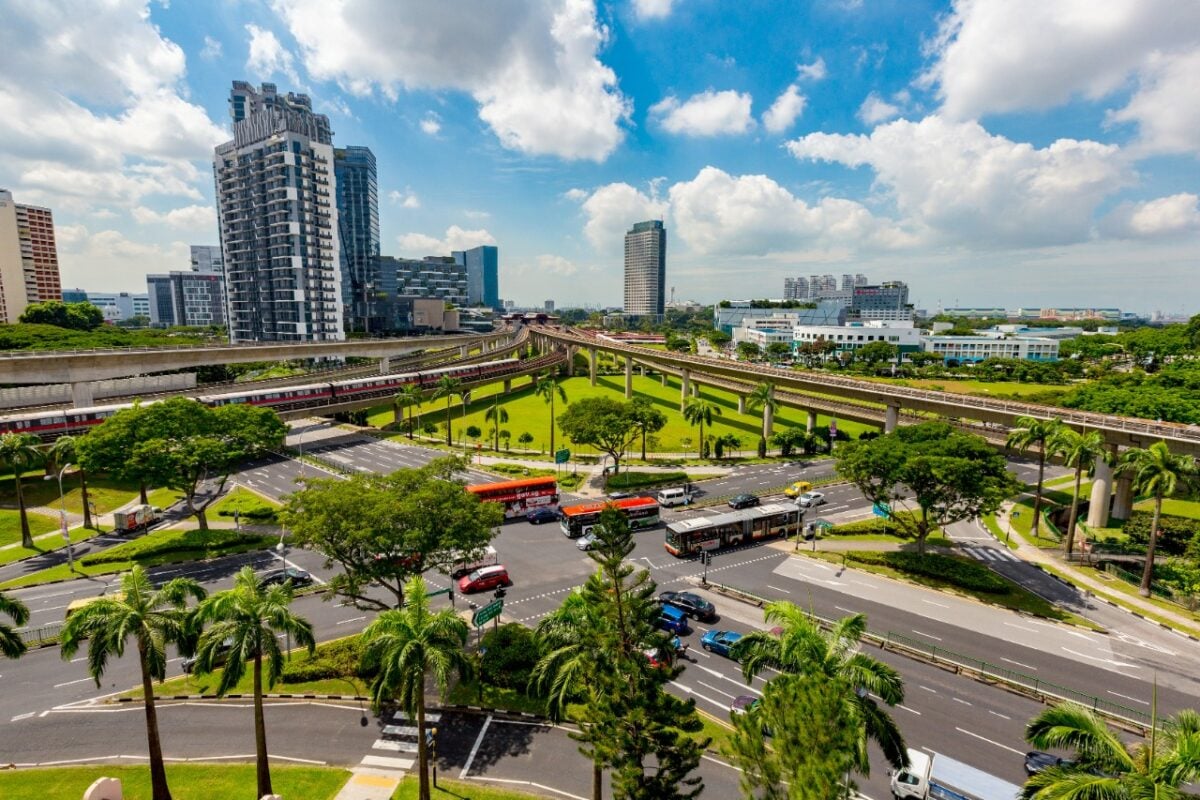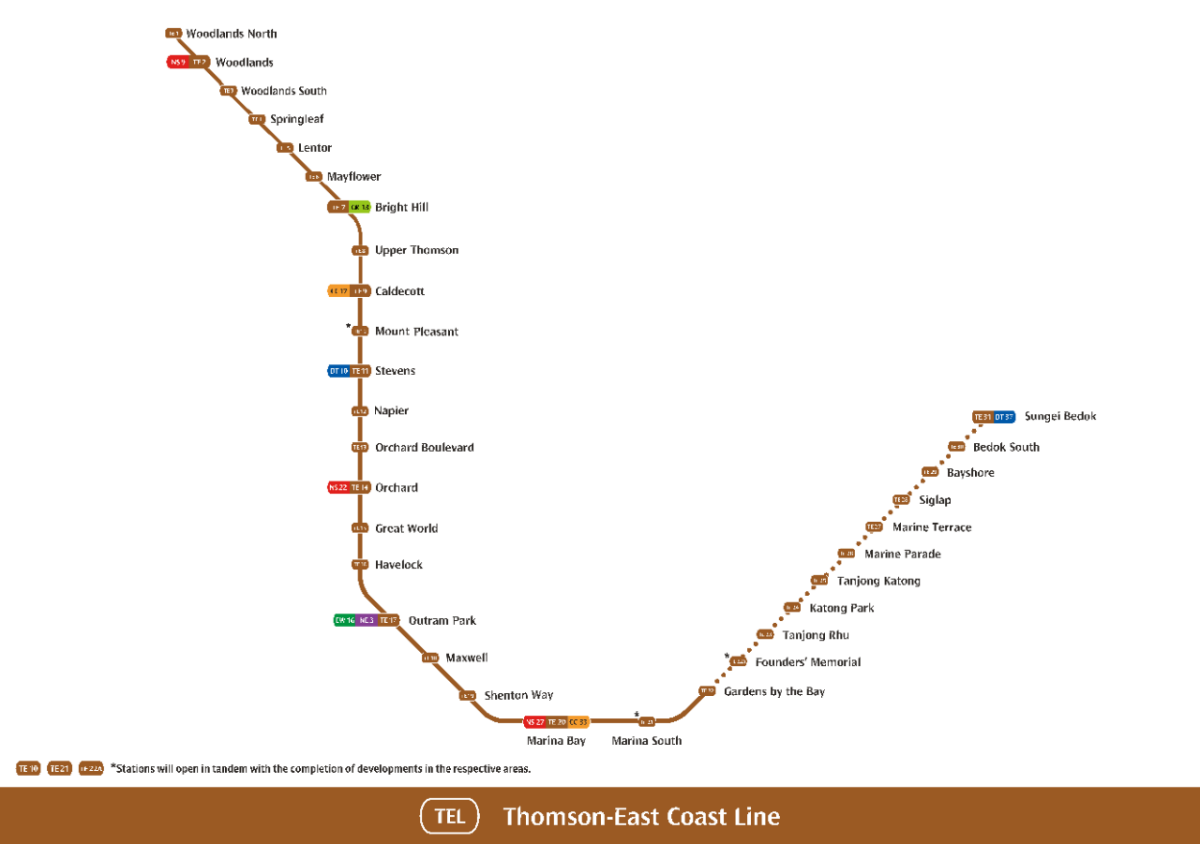Singapore’s public transport system is set to undergo a significant transformation with the full operation of the Thomson-East Coast Line (TEL). This new MRT line not only enhances connectivity across the city-state but also represents a leap forward in urban transit solutions.
Historical background and development
The TEL is a product of strategic urban planning, merging the Thomson Line (TSL) and the Eastern Region Line (ERL) into a single, more efficient route. This integration aimed to streamline travel between the northern, central, and eastern regions of Singapore, addressing the growing demand for efficient public transport.
Recent developments and current states

As of the writing of this article, the Thomson-East Coast Line Stage 3 (TEL3) has achieved three main updates:
- Significant increase in ridership: Since the opening of the Thomson-East Coast Line Stage 3 (TEL3), the average weekday ridership on the TEL has almost tripled. It rose from 60,000 in October 2022 to 177,000 in October 2023, indicating a substantial increase in the line’s usage and popularity.
- Impact on bus services: With the increased ridership on the TEL, some bus services plying along segments of the TEL have seen an overall decrease in ridership of around 30-to-40%. This shift highlights the TEL’s role in enhancing public transport efficiency and offering a preferred alternative to bus travel for many commuters.
- Bus service adjustments: In response to the changing travel patterns and to optimise resources, adjustments to some bus services will be implemented from 10 December 2023. These adjustments are part of the ongoing efforts to streamline public transport services in line with the TEL’s expansion.
Route, features, and technical innovations

Spanning over 43 kilometres and encompassing 32 stations, the TEL is a marvel of modern engineering. Notably, it operates entirely underground and utilises a driverless system, showcasing Singapore’s commitment to innovative and sustainable transport solutions.
Future expansion and long-term plans
Looking ahead, the TEL is set to expand further under the Land Transport Master Plan 2040. This expansion includes extending the line to Changi Airport Terminal 5 and the airport itself, significantly enhancing connectivity for both residents and international travellers.
Read more: Bishan-to-City Links Project: A game-changer for Singaporean commuters
Benefits to citizens and urban development
The TEL is more than just a transport project; it’s a catalyst for urban development. By improving accessibility, it’s expected to ease congestion on other major lines and boost the value of properties along its route, reshaping the urban landscape of Singapore.
Challenges and considerations
While the TEL’s development is a significant achievement, it also presents challenges, particularly in maintaining the efficiency and safety of its driverless system. Addressing these challenges is crucial for the long-term success and reliability of the line.
Conclusion
The Thomson-East Coast Line is a testament to Singapore’s forward-thinking approach to urban transportation. As the line becomes fully operational, it promises to not only transform the way residents commute but also shape the future of urban living in Singapore.
Properties near the TEL stations

4
3

3
3

3
3

3
2

3
2

1
1

1
1

-1

4
2

2
2
See all Woodlands >

3
3

1
2

2
1

3
3

1
1

2
2

1
1

1
2

4
4

2
2

1
1

1
2

1
1

1
1

1
1

2
2

3
3

3
2

2
2

1
1

1
1

2
2

1
1

1
1

2
2

1
1

-1
1

1
1

2
2

0
1

1
2

2
2

2
2

2
2

2
2
See all Tanjong Pagar >

2
2

6
5

3
3

3
3

2
2

2
2

3
2

3
2

6
5

1
1

2
2

2
2

2
2

3
3

3
3

3
3

3
3

4
3

3
2

3
2

3
3

2
2

2
2

2
2

6
7

3
2

3
2

3
2

-1

3
3

4
3

4
3

2
2

3
3

5
5
See all Bayshore >
5
4
2
2

5
5

3
3
7
7

2
3

-1
1

8
6

3
2

5
4

1
1

5
4

5
5

3
2

5
3

4
3

5
3

5
5

5
5

4
3

4
3

6
4

3
3

0
1

4
3

7
5

6
7

5
5

5
5

5
4

3
3

4
3

3
2

5
4

4
3
See all Sungai Bedok >

3
2

1
1

2
1

3
2

5
4

2
2

1
1

2
2

3
2

5
4

2
2

3
2

-1

3
2

-1
1

3
2

2
2

-1

2
2

3
2

3
2

-1

7
7

2
1

2
1

1
1

-1
3

2
2

4
5

2
2

1
1

1
1

2
1

2
2

3
3
See all Tanah Merah >
The post The Thomson-East Coast Line: Transforming Singapore’s public transport landscape appeared first on .


